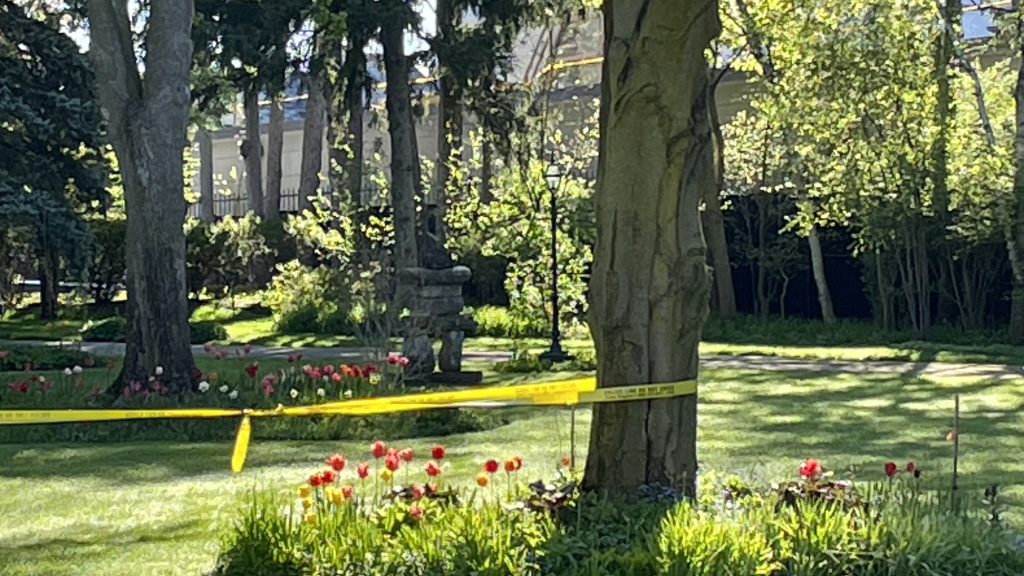New legislation arrives October to target drivers impaired by drugs
Posted September 16, 2016 5:55 am.
Last Updated September 16, 2016 6:45 pm.
This article is more than 5 years old.
The rules are changing for drivers who get behind the wheel while impaired by drugs.
New legislation is coming into effect on Oct. 2 that introduces harsher penalties for drivers impaired by drugs, 680 NEWS has learned.
Under the new legislation, drivers caught high behind the wheel will have their driver’s licence suspended just like those caught driving drunk.
Currently, drivers impaired by drugs face criminal charges but do not face automatic licence suspensions like drunk drivers do. However, that will take place this fall when upgraded laws take effect.
“If you fail the test and you’re impaired by drugs, you will receive an immediate 90-day suspension and a seven-day vehicle impoundment,” Toronto police Const. Clint Stibbe told 680 NEWS on Friday.
Just like the rules for alcohol, Stibbe said “everybody needs to realize now the rules are the same for both.”
Police said back in May that more people were getting behind the wheel while high compared to last year. Police believe some drivers may be switching from alcohol to drugs because the latter is harder to spot.
On Friday, police said the number of drivers pulled over while being impaired on drugs has almost tripled since this time last year. So far, 55 people have been pulled over in 2016 compared to 19 at this time last year.
Stibbe told CityNews there is no technology available right now to screen people who are driving while high. Officers are using the “drug recognition observation” method to screen drivers.
Related stories:
Impaired driving by drug charges up 150 per cent in Toronto: police
Failure to properly maintain breathalyzers helping people beat impaired convictions: MADD
Following is a Q & A with the Ministry of Transportation about the drug-impaired driving legislation:
How does the legislation work?
The Making Ontario’s Roads Safer Act, 2015, passed last June with all party support. This legislation, and its supporting regulations, extend existing alcohol impaired driving sanctions to suspected drug impaired drivers. The new changes are as follows:
- (At road side) Based on the results of a Standardized Field Sobriety Test: Escalating short-term driver’s licence suspensions of 3, 7, and 30 days;
- Based on a Drug Recognition Expert’s (DRE) evaluation: A long-term driver’s licence suspension of 90 days could be applied based on additional testing by a police officer, a 7-day vehicle impoundment would also apply;
- Mandatory remedial education, treatment and/or monitoring for repeat occurrences of any administrative suspensions related to drug and/or alcohol impaired driving.
These measures will be implemented on October 2, 2016.
What are the current penalties for drug-impaired driving and how will those change come October 2nd?
In Canada, both the federal and provincial governments have authority over the issue of impaired driving. Accordingly, there are both Criminal Code and Ontario Highway Traffic Act (HTA) consequences for impaired driving.
From a provincial perspective, Ontario has introduced smart laws and increased penalties to help fight drinking and driving to make our roads even safer. However, currently under the Highway Traffic Act, police cannot immediately remove drivers from the road who they reasonably believe are impaired by drugs. The amendments made through the Making Ontario’s Roads Safer Act, 2015, will address this gap.
The following alcohol impaired driving sanctions outlined above will be applied to suspected drug impaired drivers as of October 2nd.
What systems will be used to assess drivers’ level of drug impairment?
The Standard Field Sobriety Test (SFST) and the Drug Recognition Expert’s evaluation will be used to administer the new sanctions. These tests are in the Criminal Code and are used in criminal impaired driving investigations.
The SFST is a physical co-ordination test prescribed to test for the presence of alcohol and/or drugs in drivers of motor vehicles. The SFST employed by Ontario police services consist of three tests: the Horizontal Gaze Nystagmus (an examination of eye movements), One-Leg Stand and Walk-and-Turn.
The evaluation of a suspected drug impaired driver is conducted by an evaluator who is accredited by the International Association of Chiefs of Police, through the RCMP. The Drug Recognition Expert (DRE) uses a 12-step procedure in performing the evaluation. Any police officer in Ontario trained in SFST and/or DRE may administer the new sanctions.










